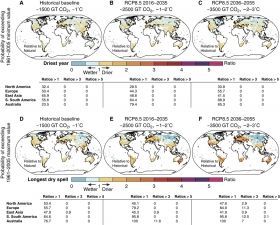The individual commitments made by parties of the United Nations Paris Agreement are not enough to fulfill the agreement’s overall goal of limiting global temperature rise to less than 2 degrees Celsius above pre-industrial levels. The difference between the U.N. goal and the actual country commitments is a mere 1 C, which may seem negligible. But a study from Stanford University, published Feb. 14 in Science Advances, finds that even that 1-degree difference could increase the likelihood of extreme weather.
In this study, Noah Diffenbaugh, the Kara J Foundation Professor of Earth System Science at Stanford’s School of Earth, Energy & Environmental Sciences, and fellow researchers from Columbia University and Dartmouth College expanded on previous work analyzing historical climate data, which demonstrated how greenhouse gas emissions have increased the probability of recording-breaking hot, wet and dry events in the present climate. Now, the group analyzed similar models to estimate the probability of extreme weather events in the future under two scenarios of the Paris Agreement: increases of 1.5 to 2 degrees if countries live up to their aspirations, or 2 to 3 degrees if they meet the commitments that they have made.
Continue reading at Stanford University
Image via Science Advances


